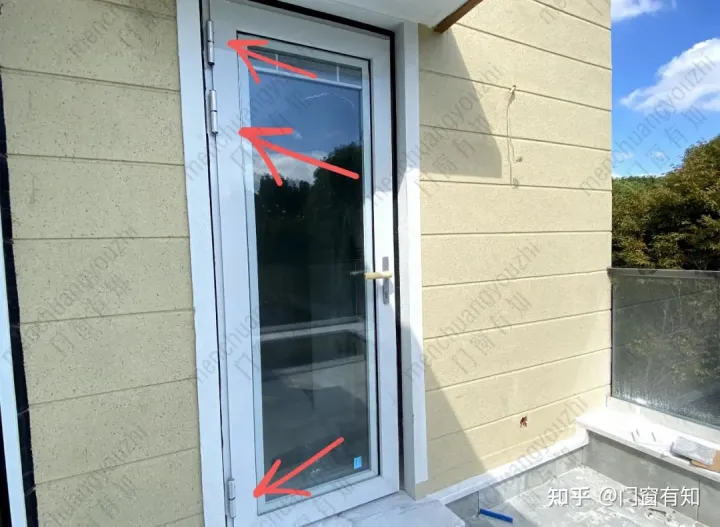The passage of time may have some very intriguing effects on your property, particularly on the windows and doors. Have you seen that the frames of certain windows, notably bay and bow windows, have started to droop with time? The demands window sash replacement.
When the sash of a window is no longer exactly flat because the bottom corners have started to droop, you will know that the window needs to be repaired. When this occurs, you will notice that the window does not close completely when you attempt to do so.
Replacing the window sash may not be as daunting as you think. The only thing is to educate yourself properly before fixing replacement window. The coming sections will enlighten you with the required information about window sash replacement.
Key Takeways
-
Window sash sagging leads to poor closure, drafts, and reduced energy efficiency.
-
Causes include incorrect installation, uneven frame settling, or hinge and glazing misalignment.
-
Four sag types: sash settling, frame out-of-square, sash distortion, and improper hinge placement.
-
Replacement requires removing old sash, accurate measurement, installing new sash, and securing hardware.
What are the Roots of Window Sagging?
The windows may have been installed incorrectly, causing the window frame to be crooked and not all corners to be at 90 degrees.
There’s also a chance that the window sashes are crooked due to weather stripping. It is essential to use the appropriate glass blocking to keep the sash tight with corners at 90 degrees.
In such a case, the sash may not be retained in the frame in a square position. Since the hinges are placed on one side, casement windows are most prone to this problem.
Likely, the window will not be able to be mounted in the frame in a completely square position if the top and bottom hinges are not properly placed.
For those looking for dependable, long-lasting options, quality designs like these can help minimize such issues and ensure lasting stability.
The last possible cause of sagging windows is the settling of the sash, although this is by far the least prevalent of the causes. When the sill of a casement window is flexible enough to dip beyond the lower hinge shoe, the sash may become recessed.

How to Fix a Sagging Window Sash (Window Sash Replacement Guide)
L-brackets are your best chance for a temporary remedy and may be used to support a drooping window.
It is strongly suggested to seek the assistance of a professional since doing window maintenance on your own may be quite dangerous if even the smallest thing goes wrong with window parts.
The broken windows (including wooden windows) may need to be replaced before you can achieve the desired level of functionality and improved energy efficiency or make them energy efficient.
Just like any other structural component of a house, a new window must be installed correctly, maintained, and sometimes given extra love and attention. Sash sag is a typical problem with casement windows, double hung windows or single hung windows, which are joined to their frames by hinges.
When the bottom of a double-hung or single-pane window starts to sag, it is known as sash sag. This is a common issue that can be prevented or reduced. Here are some suggestions for addressing either scenario.
There are four distinct types of sash sag, each based on a different principle, but all involving downward movement.
1. The Settling of the Sash
The term “sash settling” refers to the process through which the whole sash has moved downward toward the sill. This is not an issue in most cases unless the windows are big and heavy.
2. Construct a Rectangle from a Square
When installing replacement windows or casement windows, the junction between the sill and the window jamb on the hinge side has to be at an angle of ninety degrees.
Sagging might develop if the procedure is not carried out correctly. One of the jambs may be longer than the other, or the sill and head may be of different lengths, all of which are other reasons why a window frame could not be square.
Alterations may also occur in the angles and alignment of a window’s frame if a structure has settled unevenly over time on its base.
Homeowners may determine whether or not the window frames in their homes are square by measuring the angle formed by the lowest hinge corner of the frame.
Sagging will take place if the angle is less than ninety degrees. Another approach involves diagonally taking measurements of the frame in both directions.
A frame is considered out of square if the measurement considering the top hinge corner is shorter than the other measurement. You can use utility knife or putty knife to determine this. That is when you must consider window replacement.

3. Remove the Sash from the Square
The weight of the sash is held in place by the bottom hinge corner in casement windows. Because the vast majority of unglazed sashes are not rigid, there may be spaces between the sash and the glass that allow the weight of the glass to cause the sash to become crooked.
The glass is positioned inside the sash by glazing blocks, also referred to by their previous name, settling blocks.
The most effective method for reducing sag is to position the blocks in the corners near the hinge, as is practical.
Only the hinge corner of a sash is responsible for sustaining the weight of the glazing since the lock side of the sash does not have any support.
The degree to which the sash on vinyl windows will maintain its square shape depends on the robustness of the corner joints and the rigidity of the sash rails and stiles.
Homeowners may follow the same techniques described for checking for a frame that is out of square (even in jeld wen), but they must ensure that their measurements stay inside the confines of the sash.
This will allow them to determine whether or not the sash windows are square.
The main difference is that sagging happens when the angle of the bottom hinge corner is more than 90 degrees, which indicates that the hinge is not properly attached.
4. Sash Not Held in a Square Position Inside the Frame
Sagging may be caused by the movement of hinge joints (specific replacement parts) in combination with the weight of the sash if the top and bottom hinges on the sash and frame are not precisely set in new windows. If this is not the case, the sash will not be able to be properly positioned inside the frame.
Other aspects of sash sagging to take into consideration include the following: taller and narrower windows have a lower propensity to droop; mounting screws should be secure, but not unduly tight, to avoid hinge movement; and adjustable hinges may be utilized to cope with any movement or sagging that may occur.
All of this demonstrates how crucial attention to detail is regarding window maintenance. And when you feel things are out of place on window opening simply consider window sash replacement.
Steps for Replacing a Window Sash
1. Prepare the Window
-
Remove any screens, storm windows, or other external attachments.
2. Remove the Old Sash
-
Detach hardware: Depending on the window type, this may involve untying sash cords, disconnecting balances, or removing pivot pins.
-
Remove the sash: Once the hardware is released, carefully lift the sash out of the frame.
3. Measure the Opening
-
Take three measurements each for the height and width of the window opening.
-
Use the smallest measurements for both height and width.
-
Order your replacement sash using these measurements to ensure a proper fit.
4. Transfer or Install Hardware
-
Move any reusable components (such as balance channels, sash cams, or weights) from the old sash to the new one.
5. Install the New Sash
-
Position the sash: Gently slide the new sash into place within the window frame.
-
Secure hardware: Attach balances, locking tabs, or any other required fittings.
6. Reinstall Window Components
-
Replace any stops, trim pieces, or other parts removed during preparation.
7. Test the Window
-
Make sure the sash slides smoothly.
-
Check that the locks engage properly and the window operates as intended.
Tips for a Successful Replacement
-
Identify your window type: Confirm whether you’re working with a double-hung, casement, or another style, since the replacement process can vary.
-
Enhance insulation: Consider adding weatherstripping to the new sash to improve energy efficiency and reduce drafts.
-
Follow manufacturer guidance: Always review and follow the specific instructions provided with your replacement sash or window kit.
Where Can I Purchase Alternative Windows? Kits for Replacing Sash Windows
A new window sash replacement kit is available at most big-box hardware retailers. Buying kits online from Amazon or the website of a window supplier may be required to fix your windows if they have unusual dimensions that aren’t generally accessible.
Concluding Thoughts
Replacing a window sash is a straightforward project that most homeowners can handle safely with the right tools and preparation. For many DIYers, especially when working on modern, ground-level windows, this type of home improvement can be both manageable and rewarding.
That said, we recommend scheduling at least one consultation with a qualified professional before you begin. If you’ve never tackled window repairs before, getting a second opinion can help you anticipate potential challenges and ensure a smoother process.
When you’re ready to move forward, be sure to invest in a quality replacement sash. Reliable suppliers like Oridow offer a wide range of window products that can set you up for success. By following the steps outlined here and starting with dependable materials, you’ll be well on your way to a successful window restoration.
FAQs
-
What causes a window sash to sag over time?
Window sashes may sag due to incorrect installation, shifting of hinges, improper glazing block placement, or natural settling of the home’s structure. -
How do I know if my window sash needs replacement?
Signs include difficulty closing the window fully, visible drooping at the corners, drafts, or gaps between the sash and the frame. -
Can I fix a sagging window sash myself?
Minor adjustments, like using L-brackets or repositioning glazing blocks, may help temporarily. However, full replacement often requires proper tools, measurements, and sometimes professional assistance. -
What tools are needed for sash replacement?
Common tools include a utility knife or putty knife, screwdriver, measuring tape, and replacement hardware. Some window types may require specialty tools depending on design. -
Where can I buy replacement sash kits?
Most big-box hardware stores carry standard sash replacement kits. For unusual dimensions, you may need to order online from suppliers such as Amazon or specialized window manufacturers. -
How can I prevent future sash sagging?
Ensure proper installation, use high-quality sash kits, check frame alignment regularly, and add weatherstripping for insulation and stability.




